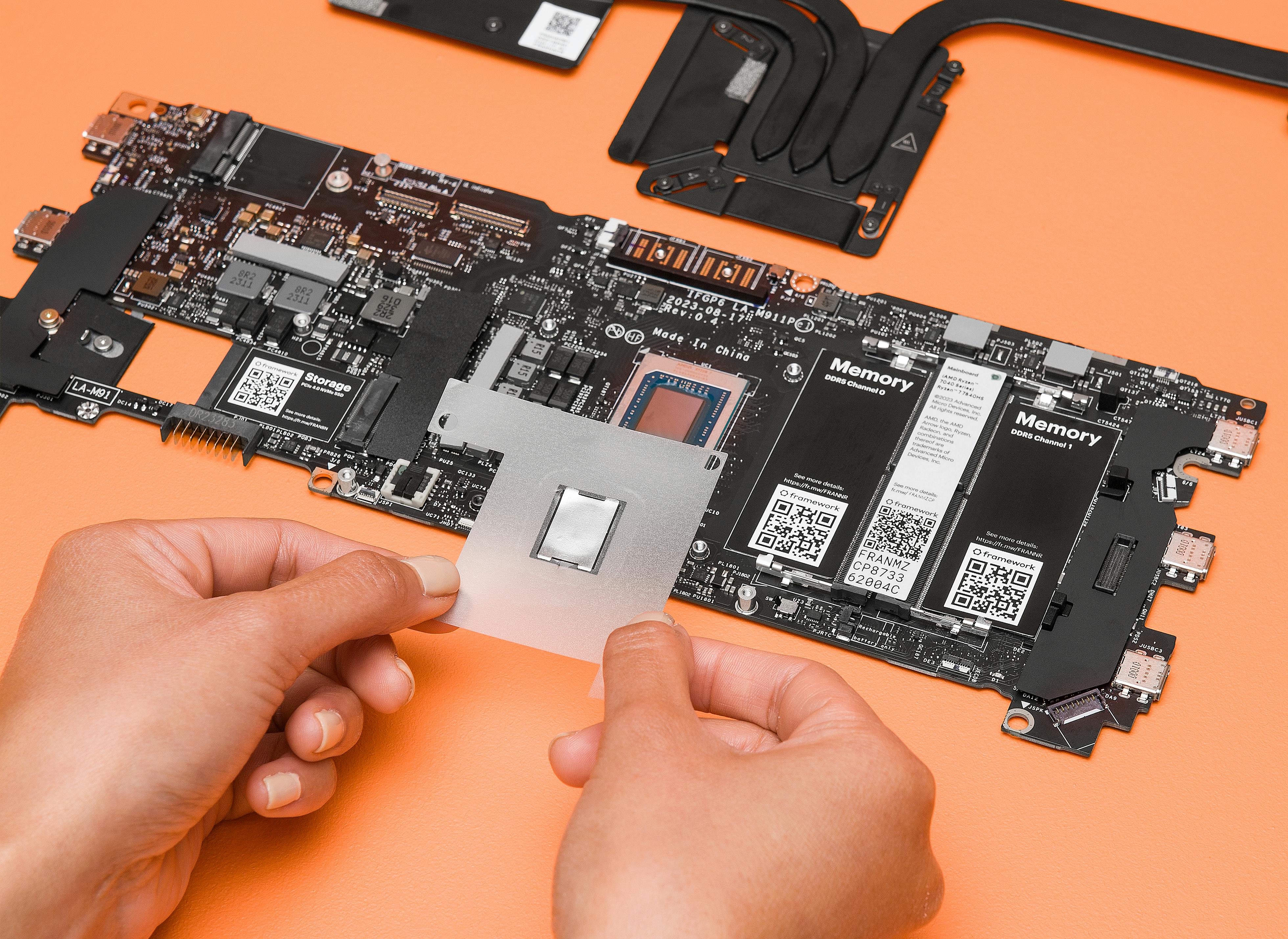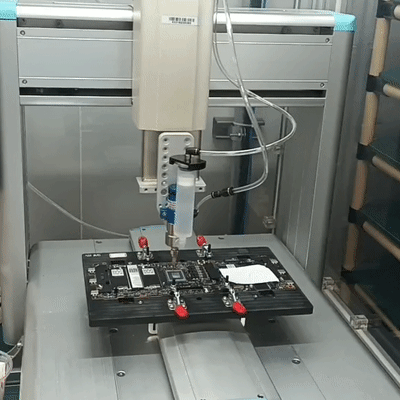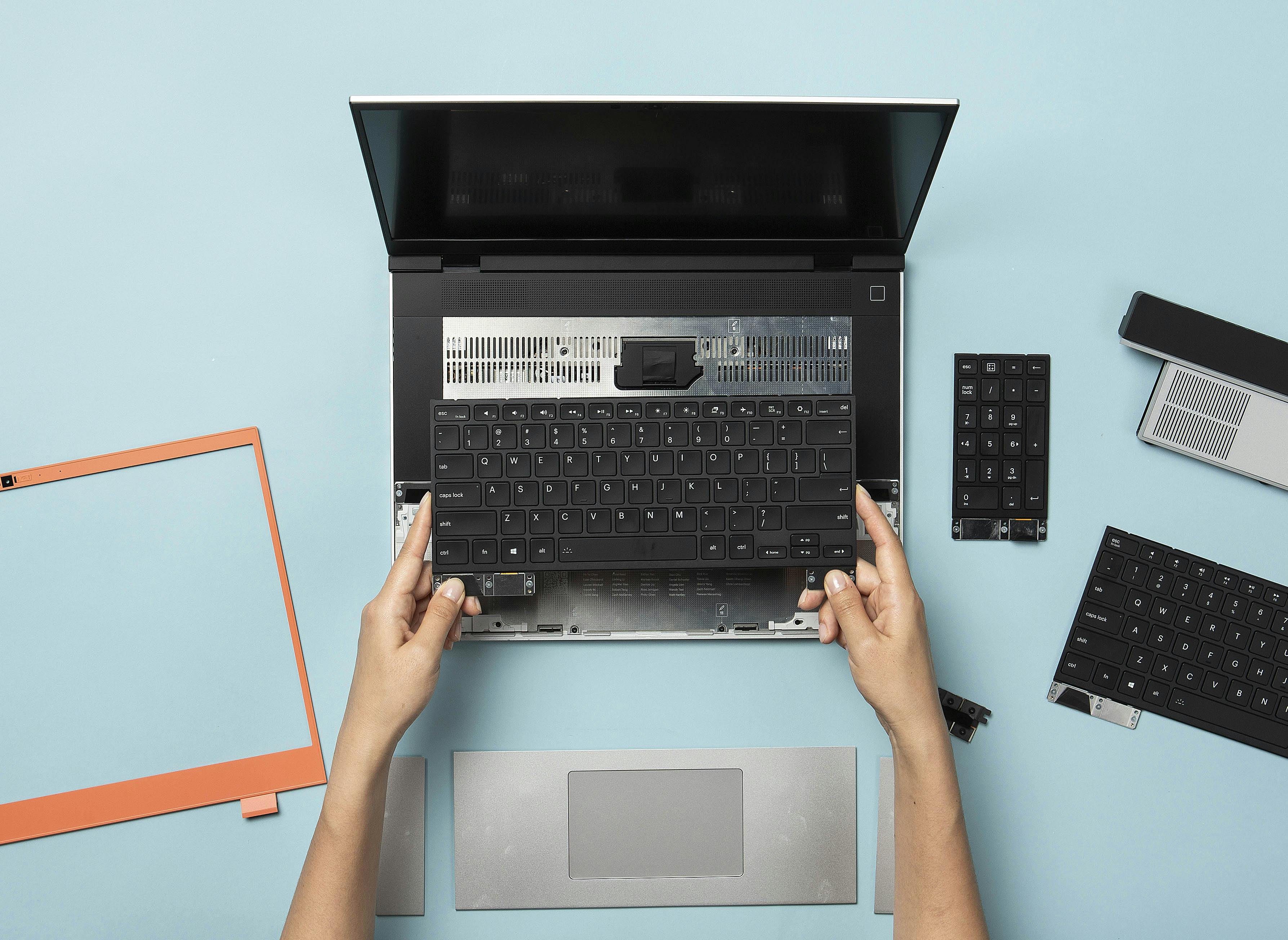Framework Laptop 16 Deep Dive - Liquid Metal

The Ryzen 7040 Series processor in Framework Laptop 16 is capable of running at a sustained 45W TDP (Thermal Design Power) and we put together an excellent thermal solution to ensure it can do that while keeping CPU temperature, touch temperatures, and fan noise to a minimum. That 45 watts of CPU power needs to be efficiently conducted into the vapor chamber, heatpipes, and fins to be carried away through airflow from the fans. Since neither the CPU die nor the vapor chamber surface are perfectly flat, a thermal interface material is needed to fill in gaps to avoid comparatively insulative air taking up that space. Traditionally, most computers use a thermal grease that has thermally conductive particles suspended in silicone. This works reasonably well, but the silicone itself isn’t especially thermally conductive, and the paste can pump out or dry out over time, making it less effective.

Instead, on Framework Laptop 16, we used a liquid metal thermal interface on the CPU. Liquid metal is exactly what it sounds like: a 100% metal sheet made up of indium, tin, and bismuth that turns from solid into liquid at around 58°C as the CPU heats up, filling any air gaps completely. Being metal, it is extremely thermally conductive, rated at 72W/mK, substantially better than the 5-10W/mK that is typical for traditional paste. It also doesn’t dry out or pump out over time. We’re using Coollaboratory’s Liquid MetalPad through their Taiwan-based partner CCHUAN.

You might be thinking, is it safe to have highly electrically conductive liquid inside of a portable device? The answer in this case is yes, as we’ve designed the thermal system to contain it at multiple levels. First, because AMD’s processors have small capacitors directly next to the CPU dies, we dispense an insulative glue layer using a robotic fixture during Mainboard assembly to cover them. Next, an etched pattern in the surface of the vapor chamber holds the liquid metal through tension. Finally, a dual foam barrier around the CPU is squeezed between the processor package and the vapor chamber copper plate, preventing any liquid metal from escaping. All of this results in a very cool thermal solution and great CPU performance.
More from the Framework Laptop 16 Deep Dive blog posts:
